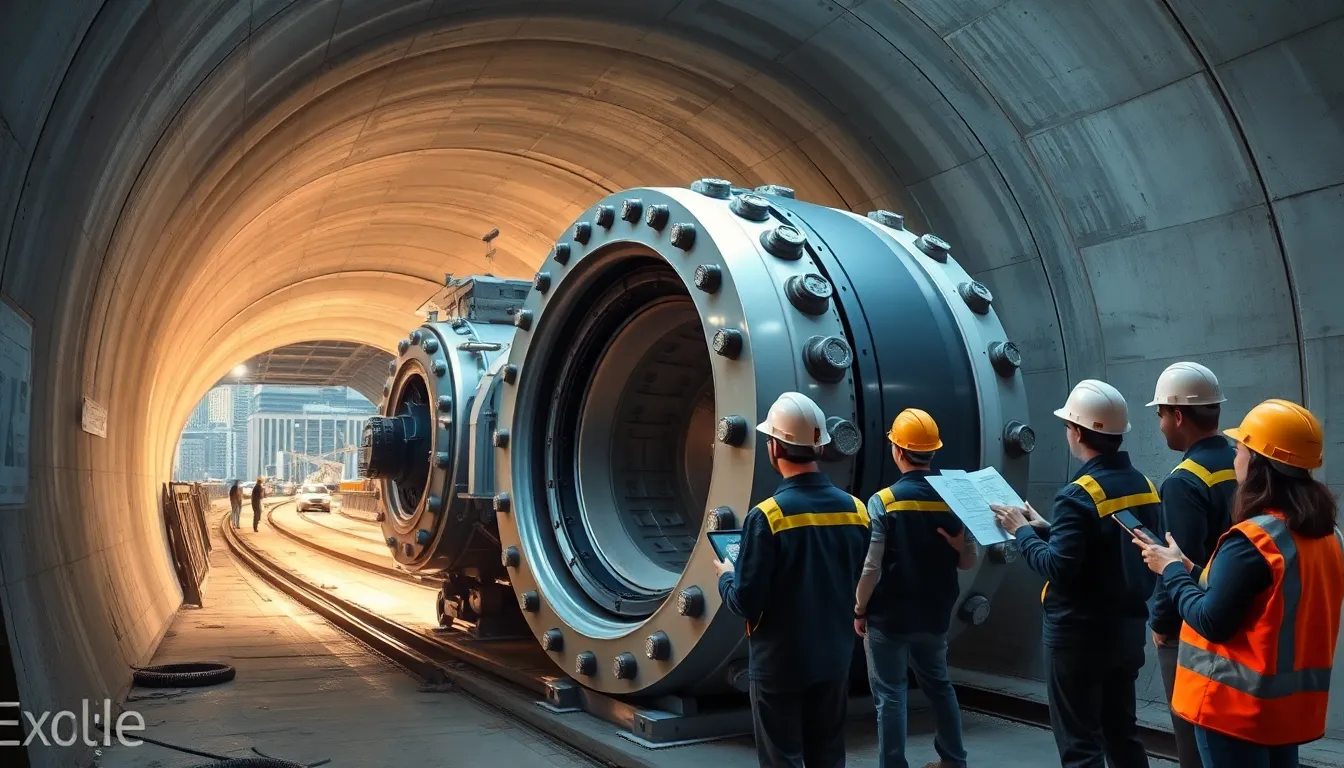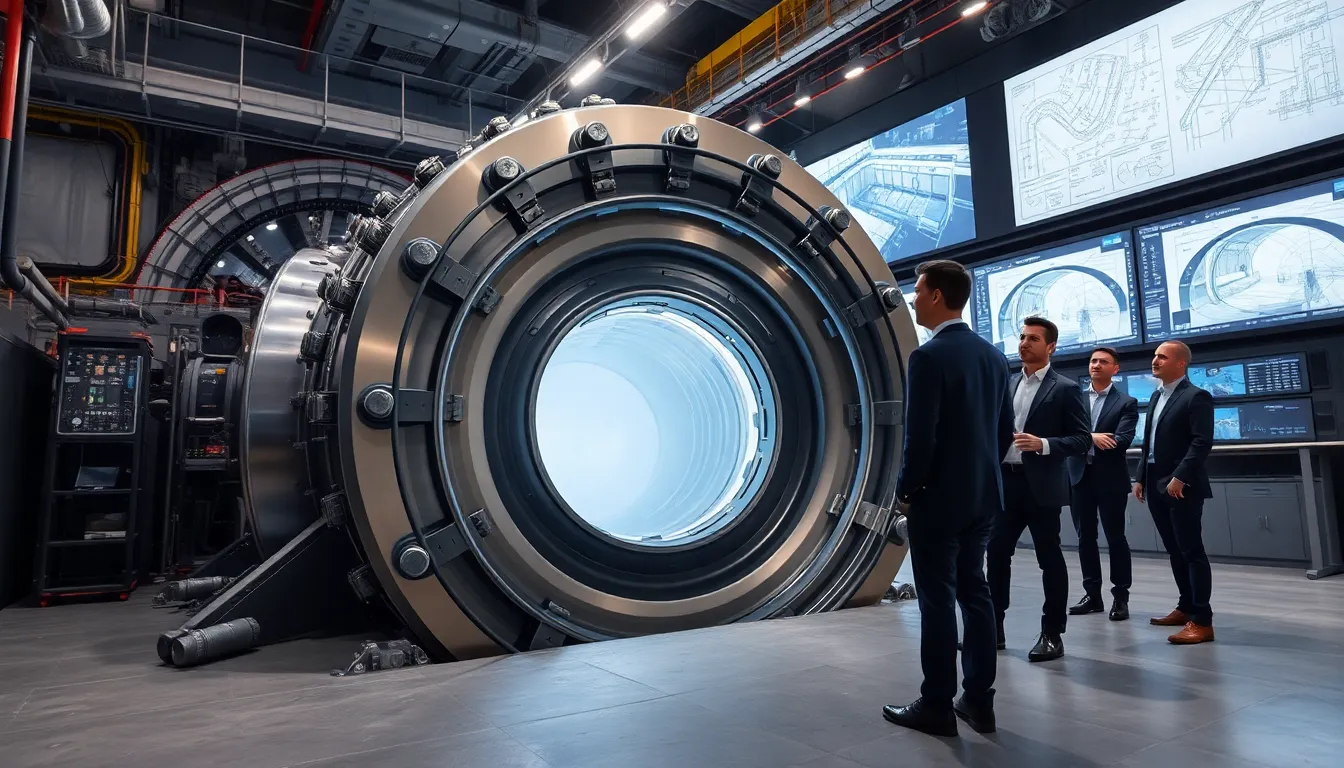When most people think of construction, they picture towering skyscrapers and bustling roads. But what about the vast, hidden worlds underneath our feet? Tunnelling and underground space technology are revolutionizing how we approach urban development. It sounds a bit like science fiction, doesn’t it? Yet, it’s a reality that’s saving space and solving city problems, all while avoiding the hazards of above-ground construction. Buckle up as we explore the fascinating realms and quirky innovations of tunnelling technology.
Table of Contents
ToggleIntroduction To Tunnelling Technology

Tunnelling technology refers to the methods and processes used to create tunnels, whether in urban settings or remote areas. This fascinating field encompasses various aspects, including design, construction, and even maintenance of underground spaces. From moving people and goods to storing resources, tunnelling serves many critical functions. The appeal lies not only in practicality but also in innovation, engineers constantly strive to push boundaries. Remarkably, tunnelling minimizes surface disruption, preserving the natural environment while enhancing urban logistics.
The equipment utilized in tunnelling has advanced tremendously, evolving from ancient tools to modern marvels like tunnel boring machines (TBMs). These sophisticated machines take on the dirty work of digging through rock and gravel while ensuring precision and safety. Each tunnel is crafted for its specific purpose, whether it’s a transportation corridor, a utility passage, or even an underground city. The efficiency and ingenuity employed in this domain showcase the intricate dance between humanity and the earth.
History And Evolution Of Tunnelling
The story of tunnelling stretches back to ancient times when civilizations carved out rudimentary tunnels by hand. The first known tunnel was constructed by the Assyrians around 700 BC, primarily for irrigation. Fast forward to the 19th century, and the Industrial Revolution sparked a tunnelling boom. The construction of the Thames Tunnel in London, completed in 1843, showcased the potential of underground projects, paving the way for modern methods.
As urbanization increased, so did the need for innovative tunnelling techniques. The early 20th century introduced the use of explosives for larger, more complex projects, which significantly reduced the time and manpower required. But, with great power came great responsibility, ensuring safety became paramount after disasters in poorly constructed tunnels.
Today, tunnelling technology has reached unprecedented levels, supporting major infrastructure projects worldwide. Engineers employ advanced surveying equipment and computer modelling to enhance design accuracy, making tunnelling safer and more cost-effective. Innovations, including prefabricated tunnel linings and digital monitoring systems, epitomize the evolution of this remarkable field.
Types Of Tunnelling Methods
Understanding the various tunnelling methods is critical to grasping the complexities of this field. Each technique serves different purposes based on geological conditions, project requirements, and environmental impacts. Several common methods include:
- Cut-and-Cover Method: This approach involves excavating a trench, constructing a tunnel structure, and then covering it back up. It’s often used for shallow tunnels and is particularly effective in urban areas.
- Tunnel Boring Machines (TBMs): These monstrous machines are designed to bore through rock with remarkable efficiency. They’re equipped with cutting wheels that tackle various geological conditions, making them ideal for deep, long tunnels.
- Drill and Blast: As the name suggests, this technique involved drilling holes into rock and blasting it apart. Although effective, it’s often less preferred due to the noise and disruption it causes.
- Earth Pressure Balance (EPB): EPB tunnelling is used in soft ground environments. This method controls the pressure inside the tunnel, preventing collapses while excavating.
- New Austrian Tunnelling Method (NATM): This is a flexible system that adapts to various conditions during excavation, allowing for real-time adjustments. NATM has proven effective for rock and soil conditions.
Each method has its advantages depending on the context, and engineers carefully select the most appropriate technology to mitigate risks and ensure successful tunnel construction.
Challenges In Tunnelling Projects
Tunnelling is not without its challenges. Various factors come into play that can complicate projects and test the mettle of even the toughest engineers. First, geological conditions can be unpredictable. Hard rocks, water ingress, and unstable soil are no friend to a tunnelling team. It takes considerable expertise to navigate these obstacles effectively.
Then there’s the human aspect. Safety is paramount: tunnellers often work in cramped conditions and at depths that pose significant risks. Proper management and ongoing training are essential to minimizing accidents. Also, community concerns can arise, especially in urban areas, where noise, dust, and vibrations can impact citizens’ day-to-day lives.
Finally, funding remains a perennial challenge. Tunnelling projects can carry hefty price tags, and budget overruns can lead to project delays and cancellations. Precise planning and financial forecasting are so crucial to securing the necessary resources.
Applications Of Underground Space Technology
The applications of underground space technology are almost limitless, manifesting in numerous innovative uses that enhance urban living and sustainability. Here are a few notable examples:
- Transportation: Subways and underground railways alleviate surface congestion while providing efficient transit options. Also, tunnels connect cities and regions seamlessly, fostering economic growth.
- Utility Infrastructure: Many cities employ underground tunnels to house utilities such as power lines, water mains, and sewage systems. This not only keeps essential services operational but also protects them from natural disasters and environmental degradation.
- Storage Solutions: Underground spaces are increasingly utilized for storage, particularly for hazardous materials, reducing surface clutter and improving safety. Some cities even use abandoned tunnels for off-site storage.
- Data Centers: With the rise of cloud computing, some companies are opting for underground data centers. These facilities benefit from natural temperature regulation, reducing energy consumption while providing robust protection from potential disasters.
- Research Facilities: Underground laboratories, like CERN’s Large Hadron Collider, enable scientists to conduct research shielded from cosmic radiation, paving the way for groundbreaking discoveries.
Future Trends In Tunnelling And Underground Space
As urban environments grow ever more congested, the future of tunnelling and underground space technology looks brighter than ever. Several trends are gaining traction:
- Automation: Smart technology is reshaping how we bore tunnels. Autonomous drones and robotic systems are being integrated into the construction process to enhance safety and efficiency.
- Sustainability: Developing eco-friendly methods and materials is becoming paramount. Innovations like using recycled materials for tunnel linings are on the rise, reflecting a growing commitment to green engineering.
- Collaboration: Projects increasingly require cooperation among various stakeholders. Innovative partnerships between engineers, environmentalists, and urban planners are producing solutions that account for ecological stability while pushing the envelope of what tunnelling can achieve.
- Smart Infrastructure: Implementing technology to monitor tunnel conditions in real-time is gaining momentum. Advanced sensors provide valuable data for maintenance, ensuring long-term durability and safety.
The future is paving the way for tunnels that are not only functional but also sustainable, comfortable, and highly integrated into our urban landscapes.





